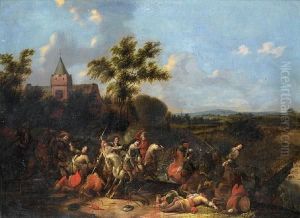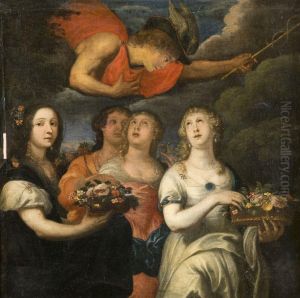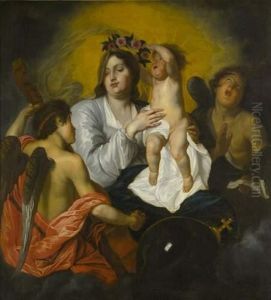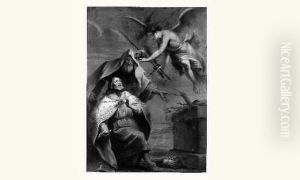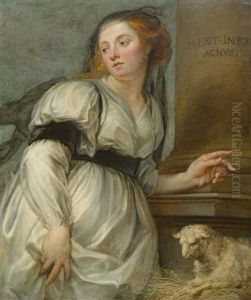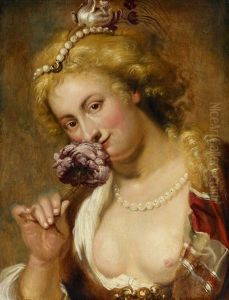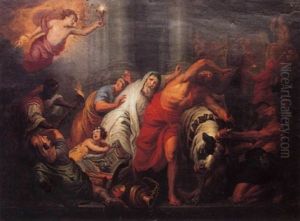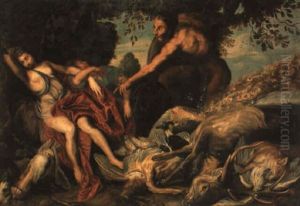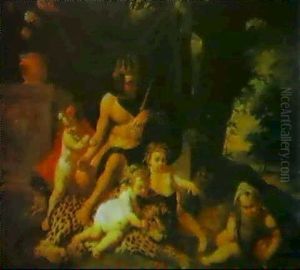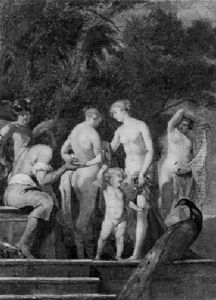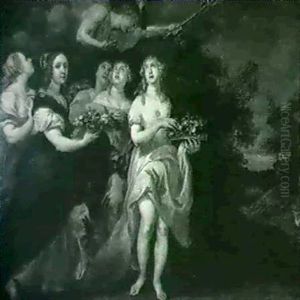Johannes De Boeckhorst Paintings
Johannes De Boeckhorst, born in 1604 in Münster, Germany, was a notable figure in the world of art during the Baroque period. Not much is known about his early life, but it's evident that his artistic journey was profoundly influenced by the stylistic currents of his time, particularly those emanating from the Low Countries, which were a hotbed of artistic innovation during the 17th century. De Boeckhorst is often associated with the Flemish Baroque tradition, a movement characterized by dramatic expressions, vibrant colors, and a keen attention to detail, all of which are evident in his works.
De Boeckhorst's career is closely linked to that of Anthony van Dyck, a towering figure in Baroque art, under whom he is believed to have studied. This mentorship significantly shaped his artistic direction, imbuing his works with a sense of dynamism and a penchant for portraying human figures with emotional depth and realism. Despite the overshadowing fame of van Dyck, De Boeckhorst managed to carve out a niche for himself, especially in the realm of religious and mythological paintings, genres that were immensely popular during his time.
Throughout his career, De Boeckhorst exhibited a remarkable versatility, dabbling in various genres, including history painting, portraits, and genre scenes. His ability to adapt and innovate within the stylistic conventions of the Baroque period contributed to his modest but enduring legacy. One of his most notable contributions to art was his skillful integration of Northern European influences with the Italianate style, which was being propagated by artists who had studied in Italy, thus embodying the cultural exchange that was a hallmark of the Baroque period.
Johannes De Boeckhorst died in 1668, leaving behind a body of work that, while not as widely recognized as that of his contemporaries, offers valuable insights into the artistic transitions and cultural dialogues of the 17th century European art scene. His works continue to be studied for their artistic merit and as examples of the rich, stylistic interplay that characterized the Baroque era.
